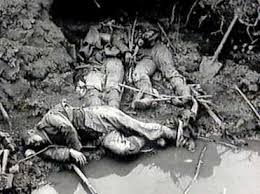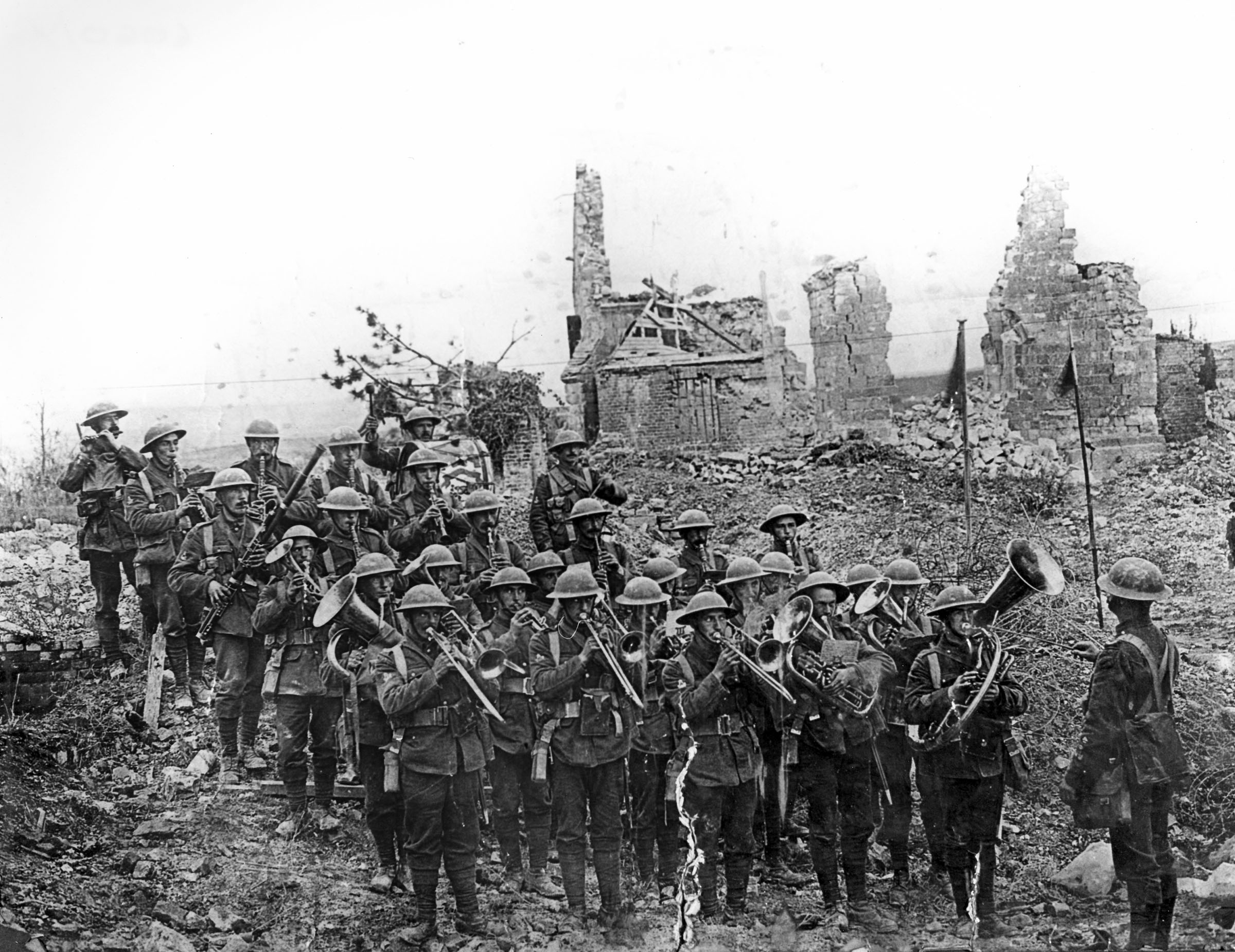Eyewitnesses to the Carnage.
The Muck and Grime of Death.
Special to The Great War Project
(22-25 May) Vicious fighting resumes again at Verdun in northern France on the Western Front.
On May 23rd a century ago, the French attack at Fort Douaumont, outside the town of Verdun. It looks at first like the French are successful, gaining ground without firing a shot.
But quickly the Germans counterattack. Two French battalions are crushed. According to one French officer who is an eye-witness to the fighting, “Nearly five hundred men were killed or wounded. The dead were piled up as high as the parapet.”

The dead in the trenches at Verdun.
Another eye-witness is a 21-year-old French Second Lieutenant, Alfred Joubaire. He marches to the front, reports historian Martin Gilbert, behind the regimental band playing Tipperary.

British band on the battlefield, Western Front, date uncertain.
Joubaire is keeping a diary. On May 23rd he writes, “Humanity is mad! It must be mad to do what it is doing. What a massacre. What scenes of horror and carnage! I cannot find words to translate my impressions. Hell cannot be so terrible. Men are mad!”
The following day, Joubaire is killed by a German artillery shell. “One projectile from the 2200 artillery pieces,” writes Gilbert, “that the German had concentrated on the salient.”
The British poet Siegfried Sassoon is also in this fight. He witnesses a night patrol as the soldiers creep toward the German trenches. Shots ring out, explosions nearby. Sassoon moves toward a crater in the battlefield. He finds one wounded man, who tells him there is another “somewhere down the crater, badly wounded.”
The Germans open fire. “The bloody sods,” Sassoon recalls later, “are firing down at me from point blank range.” Sassoon thinks his time has come. “He presses on and soon he finds the wounded man, twenty-five feet down in the crater.”
The soldier is hit in many places — arm, leg, body and head as well.
Sassoon crawls back to the British trench for help. He and two other men return to the crater, where the wounded man has now lost consciousness. They bring rope and attempt to pull him out of the crater.
“With great difficulty,” Sassoon remembers, “we get him halfway up the face of the crater. It is after one o’clock and the sky is beginning to get lighter. I make one more journey to our trench for another strong man and to see to a stretcher being ready.”
“We get him in, and it is found he has died, as I had feared.”

War poet Siegfried Sassoon.
The man is Corporal Mick O’Brien. He has seen continuous action since the autumn of 1914.
As Sassoon prepares for his next battle, he cannot get this episode out of his mind.
“O’Brien’s shattered limp body propped up down that infernal bank – face ghastly in the light of a flare, clothes torn, hair matted over the forehead – nothing left of the old cheeriness and courage and delight in any excitement of Hun-chasing.”
“Trying to lift him up the side of the crater, the soft earth kept giving way under one’s feet. He was a heavy man too, fully six feet high.
“But he was a dead man when we lowered him over the parapet on to a stretcher.”

Awful. Thank you, Mike, for your reminders of what wr is really like. – alex